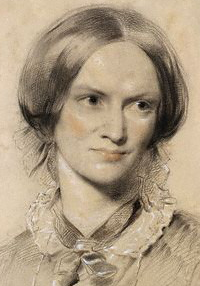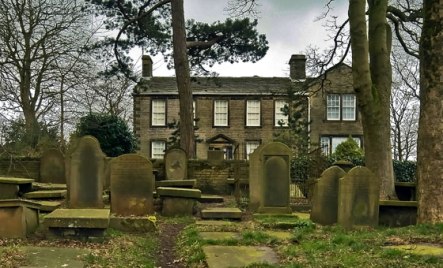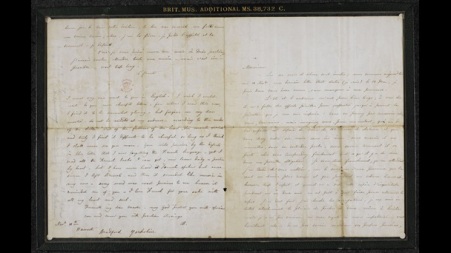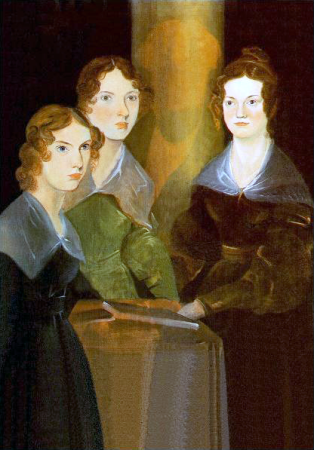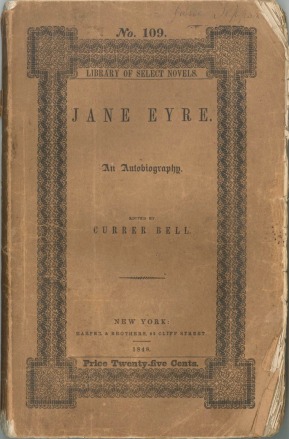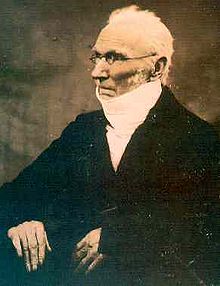Her name was Charlotte Bronte and she was born on 21st April, 1816, in Thornton, Yorkshire.
Her father was Rev. Patrick Bronte, originally from County Down, Ireland, where his father was a labourer. His name was spelled Brunty at the time. Ii is not known exactly when it was changed to Bronte, but it was probably when he came to England in 1802, after working as a blacksmith, weaver and teacher, in Ireland. He saved enough money to study theology at St. John’s College, Cambridge and was ordained in 1806.
Charlotte probably had vague memories of her mother, Maria Branwell, who died when she was five. Maria was born in Penzance, Cornwall, where her father was a successful merchant. She met my father while visiting her aunt in Yorkshire.
Charlotte had two elder sisters Maria and Elizabeth who died when she was 9, and they were 10 and 11 yeas old. They had been attending a Clergy Daughters’ School at Cowan Bridge in Lancashire, which had notoriously poor conditions. Much like Lowood, the school Charlotte described in my most successful novel, Jane Eyre.
Charlotte was the oldest of my surviving siblings, and the last to die. Her unfortunate and talented brother, Patrick Branwell was a year younger than her, and would have been a great painter and poet if he had not succumbed to the ecstasy and torture of laudanum, alcohol, and the unrequited love of a married woman.
In 1820, the year Charlotte’s youngest sister Anne was born, the family moved to Haworth, where her father had been appointed perpetual curate of St Michael and All Angels Church, and sadly, her mother died of cancer the following year.
The children were fortunate enough to have been looked after by their maternal aunt, Elizabeth Branwell. While their father taught them to read the wisdom and moralizing stories of the Bible, their aunt showed them the pleasure of reading fiction in literary magazines. My aunt, who was so devoted to us that she never married, was able to use her generous annual income to fund many of the ventures in which our father had little interest, such as a girls boarding school, which unfortunately was unsuccessful, as well as their trips to Brussels to study French.
While they were in Brussels, in return for board and tuition, Charlotte taught English and Emily taught music. Her aunt died while she was in Brussels and she was devastated, as all her siblings. Her brother, Branwell, who had been her favourite, died six years later. Although his death certificate says he died of chronic bronchitis, he had been suffering greatly due to his addictions, brought on by his sensitive character and acute sense of failure.
Charlotte fell in love with her professor of Rhetoric, while she was in Brussels. When she first met him, she described him as short, dark, and moody, and she was terrified of him at first and anxious to gain his approval as his pupil. Later, her fear and admiration turned to love. When she returned to Haworth, they remained in touch for a time. She wrote him many letters, but unfortunately, M. Heger was married and had six children, so he remained in her literary imagination and became my inspiration for Mr. Rochester.
There is more information about her letter in this post
When they were children, they used Branwell’s wooden toy soldiers to play with and invent an imaginary world, which they called Angria. They had intended to develop those stories into a series of fantasy novels. Branwell once said he would do so, but sadly, it never happened.
They were educated at home and the Bronte sisters also worked as teachers and governesses in several local schools and households, but none of them considered it a fulfilling job, so they turned to writing, which had always been our passion.
The three of them had written many poems, and in 1846, encouraged and impressed by Anne’s poems Charlotte decided to publish a selection of all their poems, which were written under the pseudonyms of Currer, Ellis and Acton Bell. They thought best not to disclose their real names and gender because they wanted to preserve their privacy and because they thought their condition as women writers would be looked upon with prejudice.
She had already written The Professor, which had been rejected for publication, but their luck changed the following year, my Jane Eyre, Emily’s Wuthering Heights, and Ann’s Agnes Grey were all published, still under the Bell pseudonyms. It was not until 1848, that they told our London publishers who we really were.
Although Jane Eyre soon became a best seller, some literary critics thought it was provocative, antichristian and coarse. Some critics even thought it had been written by a man! But how could a man have written three volumes uncovering the complexity of a woman’s heart and soul?
Two of the saddest moments of Charlotte’s life were the deaths of my sisters Emily and Anne in 1848 and 1849. They were both taken in their prime. She heard their failing breaths and watched the colour fade from their faces, as the eternal stillness took over. This is part of a poem she wrote when Anne died: ‘There ‘s little joy in life for me, And little terror in the grave; I ‘ve lived the parting hour to see, Of one I would have died to save.
Charlotte did not think much of London life, but she visited on a few occasions and made the acquaintance of other notable writers, such as Mr. Thackeray and Mrs. Gaskell. She was especially impressed by the Great Exhibition at Crystal Palace in London, which she visited in 1851.
She had known Rev. Nicholls, curate of Haworth, since 1845. The first time he proposed to her was in 1852, however her father objected and Charlotte was indifferent. Mr. Nicholls was insistent, and he was indeed a kind man, so the second time he proposed, two years later, her father did not oppose the marriage and she accepted. Charlotte did not marry for love. She had loved once and she was resigned to live without the hope of such passion again, but she would have liked to have children. She was her father’s only child still living, so she was his last chance of seeing any type of continuation in his line, but sadly, it was not to be. Charlotte died during a difficult pregnancy in 1855.
Her father survived his wife and six children. He must have sat in his favourite armchair by the window rereading his worn Bible, trying to understand why he had not yet been called. Perhaps Charlotte wrote these lines thinking of him:
He that lives must mourn.
God help us through our misery
And give us rest and joy with thee
When we reach our bourne!
Charlotte would be pleased and surprised at how much impact her novels have had over the last two centuries.
“When authors write best, or at least, when they write most fluently, an influence seems to waken in them which becomes their master, which will have its own way, putting out of view all behests but its own, dictating certain words, and insisting on their being used, whether vehement or measured in their nature; new moulding characters, giving unthought-of turns to incidents, rejecting carefully elaborated old ideas, and suddenly creating and adopting new ones. Is it not so? And should we try to counteract this influence? Can we indeed counteract it?
from a letter to G.H. Lewes, 12 January 1848.
― Charlotte Bronte, The Letters of Charlotte Bronte: With a Selection of Letters by Family and Friends Volume III: 1852-1855
Have you read her books?
Have they inspired you to write?
Note: This is a rewriting in third person of the same post I wrote in first person on 1st April, 2016.

